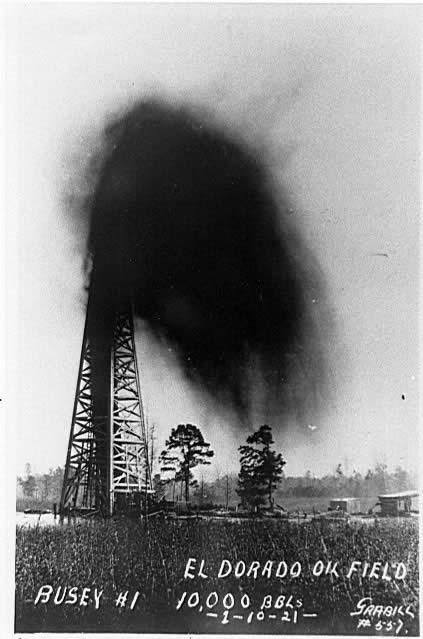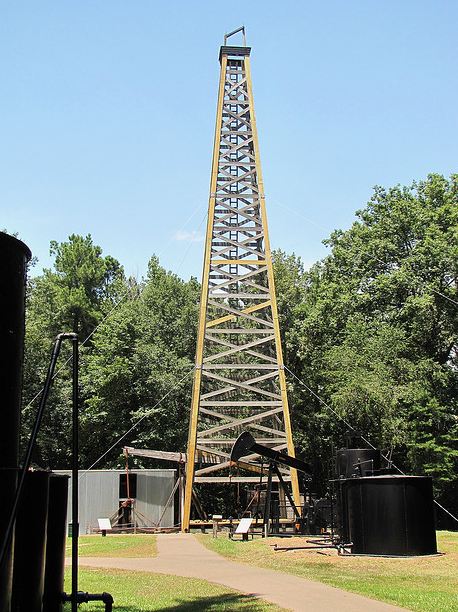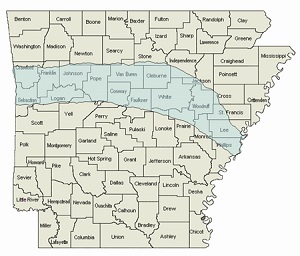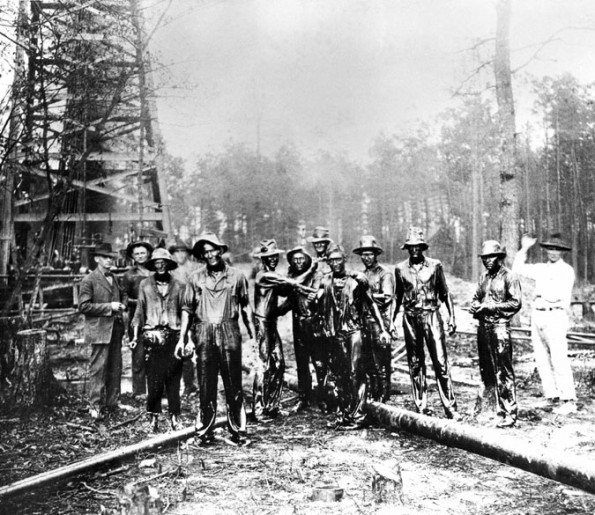By Dr. Curtis Varnell
The ground shook and a rumbling came from deep within the ground. Fearful onlookers began to flee the immediate area. A black mushroom cloud rose high into the air, falling back onto the earth is dark, oily splotches. Sheep in a nearby field turned black from the falling petroleum and people from as far as a mile away described the sky dripping oily debris for minutes after the explosion. Bussey #1 had just come into money and created an “oil rush” in Southern Arkansas. The Bussey produced millions of cubic feet of unwanted, at that time, gas and up to 10,000 barrels of oil a day.


Prior to the Jan. 10, 1921 gusher, there had been minor discoveries of oil and gas in the region but this was the first of the big-time discoveries. Within days, thousands of “wildcatters” arrived in El Dorado, transferring the small, sleepy farming village into a town of over 25,000 people. Hamburger Row, an entire street of eating joints, sprang up overnight. Hotels overflowed and barbers rented out their chairs at $2 per night as places for people to sleep. Tent villages surrounded the town, the only accommodation available to the fortune seekers arriving daily. The Arkansas legislature, stirred by the news and no doubt excited by the possibility of a new source of taxation, made a special train expedition to personally observe the boom town.

Among those arriving was one H. L. Hunt. Hunt came into town with no money but a vast skill at the card tables. Within days, he had either won enough money to invest in the oil fields and, when they came in, he became a millionaire. He later built on that capital by investing in the East Texas oil fields and became an oil tycoon. By 1957, his estimated wealth was from $400-$700 million dollars. He probably needed that money to assist in raising his 15 children and to pay alimony to several wives. His children became famous in several enterprises including his son Lamar who was founder of the American Football League.
Six months after the oil boom hit the El Dorado field, another giant oilfield was discovered 12 miles north near a small community with the unusual name of Smackover (Arkansas butchering of the French term Sumac Couvert which means covered with sumac). Smackover, a small town of 131 individuals, swelled to a population of over 10,000. By 1925, it was the largest-producing oil field in the world and would eventually produce more than 583 million barrels of oil. So many oil wells were drilled within the field that the distribution companies could not ship oil to the refineries as fast as it was produced. Large earthen pools were filled with petroleum, waiting on transportation to the refineries. Mixed with rainfall, thousands of barrels were diluted and wasted.

The ten oil-producing counties in Arkansas produced more than 1.8 billion gallons of oil. Today, the region is depleted of most known oil fields but wildcatters are still seeking reserves as well as natural gas, a product once deemed as virtually useless. Murphy Oil is still active in Arkansas and supplies most of the petroleum products for Walmart stores. The Fayetteville shale boom, involving lateral drilling and the newest techniques in production, brought in a modest boom but is now dying out. Lithium, found in the bromine-rich brines of the Smackover formation, are the newest in booms for Arkansas and the region and may lead to a resurgence of days gone by.
Both Smackover and El Dorado have museums dedicated to the history of this time period and provide insight into the period of the Arkansas oil boom.








